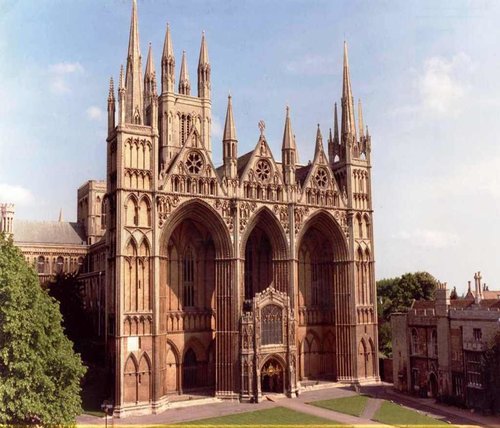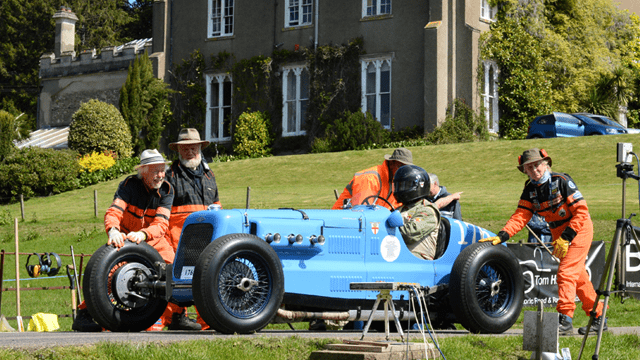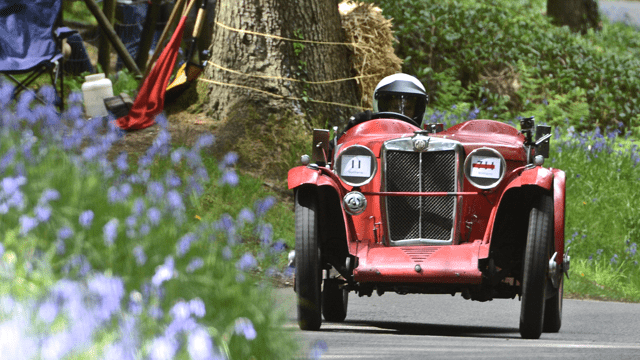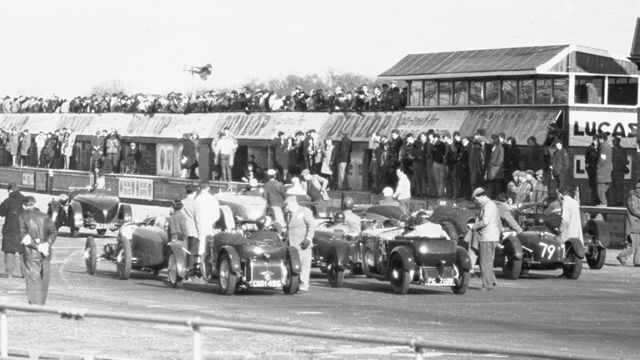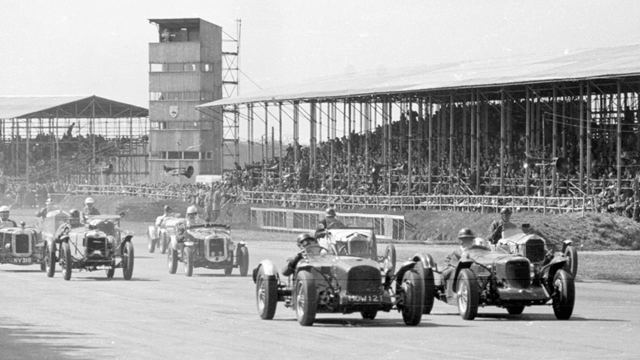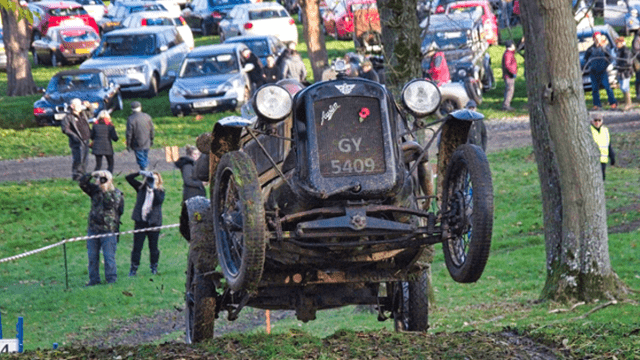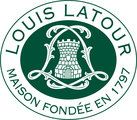NEWS
Attending the 80th Anniversary celebrations? Why not visit Peterborough Cathedral while you're in town?
Wednesday 22 January 2014
Peterborough Cathedral is situated in the center of the town only a 10 minute drive from the East of England Showground, the central base of the VSCC 80th Anniversary Celebrations.
The original monastery was known as Medeshamstede.
In 1539, the great abbey of Peterborough was closed and its lands and properties confiscated by King Henry VIII. To increase his control over the church in this area he created a new bishop and Peterborough Abbey Church became a Cathedral.
Katharine of Aragon
Katharine of Aragon was buried in the cathedral in 1536. Her grave can still be seen in the North Aisle near the High Altar. It is frequently honoured by visitors and often decorated with flowers and pomegranates (her symbol). It carries the legend "Katharine Queen of England", a title she was denied at the time of her death.
Mary, Queen of Scots
In 1587, the body of Mary, Queen of Scots was also buried here after her execution at nearby Fotheringhay Castle, although she was later moved to Westminster Abbey on the orders of her son, King James I of England.
Civil war to present day
The Cathedral was vandalised during the English Civil War in 1643 by Parliamentarian troops.
On 22 November 2001 the Cathedral was hit by a fire which was fortunately spotted by one of the vergers, so a swift response by emergency services followed.
The Cathedral still follows its centuries old pattern of daily worship, though the medieval monastic pattern of 8 services per day has been reduced to morning prayer, daily eucharist and evensong on most days of the week.
The Cathedral is a vibrant and developing community with regular outreach and education programmes, performances and civic events.
FOR DETAILS OF THE 80TH ANNIVERSARY CELEBRATIONS CLICK HERE
- The first monastery on this site was founded around 655AD.
- It was one of the first centres of Christianity in central England.
- The monastic settlement was almost entirely destroyed by the Vikings in 870 and rebuilt as a Benedictine abbey between 960 and 970.
- In this rebuild the central tower was retained. It was dedicated to St Peter and came to be called a burgh, hence the town surrounding the abbey was eventually named Peter-burgh.
- An aisle was built out to the west and a second tower was added.
- Only a small section of the foundations of the Saxon church remain beneath the south transept.
- There are still several significant artifacts, including the Saxon carving, the 'Hedda Stone,’ from the earlier building.
- In 2008, Anglo-Saxon grave markers were reported to have been found by workmen repairing a wall in the cathedral precincts.
- It was rebuilt in its present form between 1118 and 1238.
- It became the Cathedral of the new Diocese of Peterborough in 1541 and is now known as the Cathedral Church of St Peter, St Paul and St Andrew.
- The ceiling, which was completed between 1230 and 1250, still remains today in the original character and style, and has only been painted over twice since the day it was built: once in 1745 and once in 1834. It is one of only four of these ceilings in the whole of Europe.
- The Cathedral was largely built of Barnack limestone from quarries on its own land. It is the belief of many historians that the Cathedral was built here because it is easy to transfer this limestone to the church; it could grow without having to be relocated.
- At the beginning of the 16th century the windows were changed, the porch was inserted to support the free-standing pillars and a new building was added to the east end of the building. Other than this, the structure of the building remains as it was in 1193.
- The towers that existed before this time were not demolished; instead they were embellished with Gothic décor and two new towers were added to create a continuous front.
In 1539, the great abbey of Peterborough was closed and its lands and properties confiscated by King Henry VIII. To increase his control over the church in this area he created a new bishop and Peterborough Abbey Church became a Cathedral.
Katharine of Aragon
Katharine of Aragon was buried in the cathedral in 1536. Her grave can still be seen in the North Aisle near the High Altar. It is frequently honoured by visitors and often decorated with flowers and pomegranates (her symbol). It carries the legend "Katharine Queen of England", a title she was denied at the time of her death.
Mary, Queen of Scots
In 1587, the body of Mary, Queen of Scots was also buried here after her execution at nearby Fotheringhay Castle, although she was later moved to Westminster Abbey on the orders of her son, King James I of England.
Civil war to present day
The Cathedral was vandalised during the English Civil War in 1643 by Parliamentarian troops.
- Almost all the stained glass and medieval choir stalls were destroyed.
- The high altar and reredos were demolished, as were the cloisters and Lady Chapel.
- All the monuments and memorials of the Cathedral were also damaged or destroyed.
On 22 November 2001 the Cathedral was hit by a fire which was fortunately spotted by one of the vergers, so a swift response by emergency services followed.
- The timing was particularly unfortunate as a complete restoration of the painted wooden ceiling was coming to an end.
- The oily smoke given off by the plastic chairs coated much of the building with a particularly damaging sticky black layer.
The Cathedral still follows its centuries old pattern of daily worship, though the medieval monastic pattern of 8 services per day has been reduced to morning prayer, daily eucharist and evensong on most days of the week.
The Cathedral is a vibrant and developing community with regular outreach and education programmes, performances and civic events.
FOR DETAILS OF THE 80TH ANNIVERSARY CELEBRATIONS CLICK HERE
